独立开发者回顾游戏创作经验及教训
作者:Tristan Clark
显然,新西兰是最容易开展公司的一个国家。即便如此,我也仍讨厌各种文书工作——虽然完成这些工作并不复杂。不管是共享内容,管理规划,还是年度报告,我都希望能够尽量避免它们而专心制作游戏。
2006年中旬,我修完了英国文学学士学位(对于游戏设计来说,这一学位的重要性远超过我们的想象),并建立了一家名为Launching Pad Games的公司。那时候的我并不知道自己该做些什么,甚至未能意识到自己的这种迷茫——但是我决定坚持着这种盲目的信仰,希望能够排除各种质疑,不顾一切地走出一条发展之路。
所以本篇文章便是关于这家公司的发展故事,我们将看到这支让人惊讶的小型团队是如何形成其核心理念,并在发展道路中吸取各种经验教训。因为在2012年中旬,我们不得不暂时关闭Launching Pad Games,所以这并不是个多么快乐的故事——不过我希望在接下来的文字里,所有读者都能从我们的失败与成功中吸取宝贵的经验教训。
早期:《时尚明星》
直到2006年,我还未创造出任何一款游戏。当然了,我已经开始接触了许多游戏,包括RPG——虽然在过去5年里我一直在尝试着以各种形式去创造这类型游戏,不过最终都遭遇了失败。从中我得到了一点教训:不要独自创造一款RPG。几乎很少人能够做到这一点(Spiderweb Software便是例外)。
有一天,当我在与未来的大嫂交谈时,她表示想试试我的任天堂DS,并表示喜欢那种为角色装扮的游戏。我便灵机一动,“何不创造一款这样的游戏!”我不断地告诉自己这是来自别人的想法,我不能让他们失望。最终我便成功做到了。
同时我还需要拉拢一家发行商,并说服他们给予我财政支持。我选定了一个平台和一个目标市场,从2006年的市场背景来看,最合适的对象便是提供休闲下载服务的在线游戏门户网站。很幸运的是,我遇到了一名非常优秀的外包美术师Vin Rowe,他愿意以极低的价格提供服务,而不像我之前接触的其他人那样,向学生还提出极高的报价。
不管怎样,在Vin的帮助下,我创造了一个游戏原型并开始向外推销。在几周内,Oberon Media便向我发出了一份合理的合作协议,因为我不想让许多人失望,并保证不管发生什么情况我都要完成这款游戏,我便决定与他们进行合作。
(LPG所发行的第一款游戏。直到现在我还对此感到惊讶。)
我想要听到更多有关别人如何努力完成自己第一个游戏项目的故事。我们都必须跨越这个障碍,因为当你完成了一款游戏后,你便会知道如何去完成更多不可能的任务——这是一种习惯的养成。对于那些还未发行过任何游戏的开发商来说,他们可以尝试下像Ludum Dare(游戏邦注:一个促进个人独立游戏开发的竞赛)的挑战。
回顾过去,我发现好像一开始很多事物的发展总是非常顺利——并不是因为我知道该如何吸引住发行商的注意,那时候的我也并不熟悉这里的种种情境。尽管如此,我们还是投入了12个月的辛苦工作才完成这款名为《时尚明星》的装扮类PC游戏。最后游戏以20美元的价格面向Big Fish Games等网站发行了,而自2007年以来,这款游戏共卖出了10万份。作为开发者的我获得了2万5千美元的分红。对于这一点便没什么好详细说明的,但是我真的难以压抑内心的喜悦——我终于创造了自己的第一款游戏,并获得了一定的收益。
但我也在这一过程中吸取了一些经验教训。因为缺少原型,我直到6个月后才意识到游戏的核心环节出现了问题:我们将伴随着游戏中的多条路径去构建一款冒险游戏。如此便导致我们不得不浪费更多时间而重新开始:即创造出一个装扮模拟器,并且拥有各种时尚编辑器而提供给玩家衣服的搭配选择。
如果有人知道我在12个月的开发过程中只对游戏文件进行过1次备份,应该会非常吃惊吧。直到今日,我在想到这一点时还是心有余悸。
一开始我认为《时尚明星》应该是一款小而简单的游戏。但事实却证明我是错的,同时我也需要意识到,即使是创造一款小型游戏也必须投入大量的努力。除此之外,我还发现自己非常热衷于与别人共事:我不想在独自工作了(Vin在美国,而我在新西兰)。幸运的是,Launching Pad Games总算走上了正轨。
先尝试一些简单的内容:《Run Boots Run》
在《时尚明星》发行前我见到了Tim Knauf。在一次聚会上,他找到了我,并表示自己非常喜欢游戏创造。所以一周后,我们便建立了业务合作关系。
那段时间真的很有意思:Tim在书店工作,我也刚开始为杂志撰写技术类文章。但是在业余时间,我们总是会聚在一起勾勒游戏创造。这是帮助我们了解一个新框架的简单且快速的方法。最终我们决定创造一款Flash游戏,并使用Mac版本的Adobe程序。
《Run Boots Run》是一款关于不断奔跑的简单游戏,玩家将控制一个角色(有可能是一只猫),穿越不断加快速度的半随机关卡。
玩家可以在奔跑的过程中收集钻石,但是基于我们菜鸟级别的设计技能,玩家其实什么都做不了。我们不知道如何将这一元素添加到游戏玩法中,所以只能看着他们不断尝试着收集钻石,但却均以失败告终,并因此产生各种挫败感。所以通过这次的经历,我认为有必要进一步了解玩家的内心想法。
不要低估玩家的能力。Tim创造了一个两分半钟的非循环式音乐,但是当出现较高分数时,音乐就必须变得更长了。
我们总是会觉得自己已经创造了一些很困难的任务,孰不知,这种自大的态度只会让你在看到玩家轻松通过你自认为坚实无比的墙之后遭受沉重打击。
要么就是玩家找到了作弊的方法。这也不是没有可能的。
(我们打算将Boots创造成一只猫的形象,但是我却不知道在Flash中该如何让它的尾巴动起来。)
升级换代:《The Pretender》
我们一起发行了一款游戏,并认为我们对Flash已经足够了解,所以我们能够创造出更加复杂的游戏:益智/平台游戏三部曲,带有一个有关爱与傲慢的悲情故事。
如果说这是我们继《Run Boots Run》之后的升级其实算是一种保守的说法,但这一次我们的确能够将故事与益智游戏设计整合在一起:对于Tim和我来说,这两个元素都非常重要。
在经过三个月的开发,我们最终于2009年6月将《Pretender: Part One》推向了FlashGameLicense.com,并将看到这款游戏到底能够吸引多大的投资。在短短的几周内,我们便收到了来自Spil Games所开出的5000美元的主要授权要价。这让我们也能够将较廉价的二次授权卖给其它网站,而最终Part One获得了9000美元的收益。
这款游戏大受好评,那时候我也意识到如果能够设计一款无人能揭开的超难益智游戏该多有趣。但是就像你所看到的,我们所赚得的钱都还不足以保证公司的稳定发展。
出现这一问题的主要原因是我们在专注于三部曲的同时也渴望着转向下一个新项目。在制作其它游戏的间隙,我们完成了《Pretender》的续集,并且直到2011年11月我们才最终完成了这个三部曲——也就是第一部和第三部之间共经历了2年半的时间。这一过程真的太过漫长,这也意味着我们需要重新唤醒自己对游戏故事的记忆和热情。这让我深深明确了一点,如果你不想围绕着一款产品或游戏进行反复迭代,请不要轻易对别人做出承诺。
不过看到游戏玩家在网上讨论游戏关卡仍非常有趣,特别是当看到有人主动为你的游戏创造视频演示并上传到YouTube上与大家分享时,这种喜悦几乎难以用言语说明。
飞跃:《Zoo Lasso》
这时候,iPhone出现了,更明确的应该是,iPhone 3G发布了:即第一款在新西兰引起轰动的iPhone。它不仅看起来很有趣,而且准入门槛也较低,所以我们决定尝试着面向这一平台制作游戏——只与一两名开发者合作。
开发《Run Boots Run》让我们意识到必须将第一款游戏投放在一个相对简单的新平台上。《Zoo Lasso》源自Tim不久前所想到的一个机制,包括围绕着一组bug绘制循环而得分。
有趣的是,我们在发行游戏时所面临的是iPhone市场“逐底竞争”时代的开始,那时候0.99美元的游戏还不像现在这么普遍(游戏邦注:免费游戏也还未占据主导地位,自然也还未出现应用内部购买机制)。实际上,直到游戏即将发行的最后时刻,我们仍在纠结着是否应该将价格设为1.99美元。
《Zoo Lasso》最终遭遇失败的一部分原因是我和Tim的游戏设计经验还不足,仍处于学习阶段,我们也未拥有足够的技能去完整地创造游戏理念。所以最终才会创造出这么一款并不成熟的游戏。
市场营销是另外一个原因,这点也始终影响着我们的所有项目。我们发行了《Zoo Lasso》一周后几乎未取得任何销量。因为我们并未拥有足够的预算去进行市场营销,老实话,我们仍处于挣扎阶段:虽然我们尝试着去吸引一些游戏网站的注意,希望他们能够为游戏撰写评论,但是这些评论似乎也不能有效提升游戏的销量。
但是在此一周后我们进入了苹果App Store的“全新且值得注意的游戏”列表中,并卖出了1万多份游戏。对此我们真的高兴坏了,不过随着推荐热潮的淡却,游戏的销量很快又开始下滑。这是我们在面对排行位次时首次经历云霄飞车般跌宕起伏的情感转变。几天后,我强迫自己离开电脑——因为连续几天我都在不断地刷新页面,观察着游戏排行的攀升或下降。
作为一次学习经验,《Zoo Lasso》将我们引入了iOS平台,Objective-C语言以及Cocos2d框架——我们最后都是使用这些工具去开发所有iOS游戏。但这却不是一款足以让我们放弃日常工作而全身心投入游戏创作的成功之作。不过不管好坏,我们都未放弃游戏开发。
再次升级:《Scarlett and the Spark of Life》
我们既从《Run Boots Run》这款小游戏跳向了不规则的《Pretender》,也从简单的《Zoo Lasso》过度到了成熟的LucasArts般冒险游戏。所以我们并不会只是围绕着现有的引擎或同一游戏类型的相关知识而创造游戏。
Tim和我始终相信必须跟着自己的心走:我们希望能够再次发挥故事创意。在Tim给我发了一条信息说道:“愤怒的公主创造了一匹马”后,我便知道我们可以致力于一些有趣的创作中了。
创 造《Scarlett》时我真的感受到了深深的满足,它也仍最接近我最想创造的游戏。尽管这款游戏未能发挥自己的最大潜能,但是它却能够与玩家有效地维系 在一起,这也是我们的其它游戏所做不到的。《Scarlett》虽然未拥有庞大的玩家基础,但是这些玩家却都非常热情:他们总是能够积极回应游戏角色和故 事。
但是最让我感动的时刻(可能也是我到现在的职业生涯中最开心的一刻)是——一位玩家发来了一张非常特别的照片:她自己制作了Scarlett的服装,并在舞会上扮演了这个活泼的公主。这真的太棒了!我们真的很高兴自己所想出的角色能够激发出别人的这种灵感。
不 过说实话,游戏的销量并不是很乐观。市场营销仍是主要因素——不过这次,我们获得了自由PR代理人Emily Morganti的帮助,她与我们分享了自己对于冒险游戏的喜爱。所以这款游戏获得了比之前游戏更多的新闻报道,特别是来自那些热衷于冒险游戏的作家们。 但是这一次,我们的最大销量也仍是来自App Store“全新且值得注意的游戏”推荐。
(James到来之前的苦难日子中我所画的《Scarlett》图像。)
我们最初将游戏的价格定为2.99美元,并再次遭到了争议。(随着时间的发展,我们也尝试了其它价格点,并最终决定1.99美元将会是维持长期发展的最佳定价)。我们下意识瞄准了免费市场,而不是进入0.99美元的运气环中,但如果你想要面对一个更小的群组,你就需要先确保自己能够接近整个群组。因为只面向iPhone而发行,所以我们只需要迎合一个细分群组中的小众用户便可,而最终销量也验证了这一结果。
除此之外,因为不能有效地规划时间表也让我们的银行存款承受了一定的压力。我们天真地认为可以在2个月内创造出一款冒险游戏。但最后却花费了9个月的时间——因为Tim在这一过程中迎来了自己的第一个孩子。所以为了继续维持游戏的开发,我们不得不向好友和家人借钱,这真的是次非常糟糕的经历。
(James最初画的《Scarlett》场景的粗略图。)
前7多月我负责图像的绘画。当然,这就意味着我必须进一步学习如何制作Flash动画,所以最初的《Scarlett》看起来就像是一个突变体。因为我的能力已经到达了极限,所以我们打算再聘请一名优秀的场景美术人员。
最终我们发现了James Ellis。那时的他刚辞掉工作,并正在寻找一份自由职业。尽管James需要做的事很多,我们仍希望他能在较短时间内重新创造出《Scarlett》的图像。你们在最终游戏中所看到的大部分图像都是James在两个周末时间内赶出来的。虽然这是件非常辛苦的工作,但至少这种睡眠不足的拼搏是有趣的——最终我们团队顺利完成了游戏制作。
《Scarlett and the Spark of Life》于2010年末正式发行,尽管这款游戏获得了很多正面评价,但它所获取的收益仍不足以维持我们的长期业务发展。然而我们三个人都决定继续打造这款游戏的第二章节,并意识到《Scarlett》具有无限潜力。我们将继续创造游戏图像,构建游戏世界,并通过头脑风暴而获得最棒的理念。
改变航线:《Mighty Fin》
随后我们开始进行现状核实。当钱不足以维持长期发展时:我们可以尝试着匆匆赶制出下一款《Scarlett》,但是这么做将会缩短某些内容,并且在游戏最后发行时我们也仍会处于贫穷状态。
我仍记得我们在咖啡店里讨论该做些什么的情形。那时候的气氛真的非常紧张!我们需要在面临所有成果有可能幻灭的情况下决定是否继续做自己所热爱的事——或暂且搁置这一项目而尝试着创造出一款能够拯救我们的小游戏。
不管你说的是制作一款违背自己内心的游戏,还是执行其他人IP的承包工作,你都应该保证能在稳定了业务并挣得了一定的资本后再次回到自己梦想的项目上。
但是很多人都发现,要想从那些只能让你艰难地朝着下一个项目发展的项目中抽身是件非常困难的事。我们之前也见过这种情况,所以我们既担忧又充满各种幻想:正是这两种特征会将对话变得更加艰难。
如此,我们的目标有可能变成是旋转轮盘,并因此决定创造出一款0.99美元的游戏,然后尽最大的努力将其推向排行榜单的最好成绩。
所以这一次我们决定更加谨慎。我们设定了2周的理念阶段,希望在这一过程中创造出一系列游戏原型,从中选择出最优秀的一个,并围绕着它进行创造。
我们很快明确了一个候选理念:触发式无止尽奔跑者,或游泳者——玩家将扮演着一条鱼,在一些非常危险的海域穿梭着。最早我们便明确了浮力的游戏理念,即你潜得越深,你便能跳得越高。当我们将这一理念呈献给别人看时都获得了认同,所以这便成为了《Mighty Fin》的基本理念。
接下来便是8周的开发过程。我就不详细介绍了。但是我想说最棒一点便是能够与Tim和James共事。我们的分工非常明确:Tim负责编程和音乐制作,James负责画画,而我就主导设计,关卡创造以及资产分配。尽管压力很大,但是我们却始终维持着这种紧凑的小单位而发展着,我也非常享受于这种合作关系。
但是也存在糟糕之处:8周时间就足以让我们将游戏推向排行榜的首位?击败像《愤怒的小鸟》或《翼飞冲天》等游戏?开玩笑!如此紧凑的时间限制意味着我们没有足够时间去纠正任何错误,也就是说我们必须确保《Mighty Fin》从诞生的第一天就足够完美。
到这个阶段,我们知道游戏的市场营销将变得非常艰难。因为有谁还会去注意另一款无尽奔跑的休闲游戏呢?所以我便决定加倍专注于之前所尝试过的方法:争取App Store的推荐,并努力在游戏发行时将其最好的一面呈献给所有玩家。
不过这么做也不轻松:因为这就好像我们依靠于运气。但毕竟我们不知道该采取何种方法了:我们尝试过网站评论,但却为能带来较好的销量,并且那些可能购买《Mighty Fin》的玩家似乎也不会去浏览这些网站。
(第一个游戏原型。我们总是想将红色三角形置于最后的游戏中,作为装束一般。)
最后,这款游戏获得美国App Store“全新且值得注意的游戏”之一。并因此推动游戏在发行后的24内迅速登上美国总体游戏排行榜的第39位。但是它也难以避免之后迅速下滑的结果,尽管我们已经非常努力去推广这款游戏。
为了继续支持《Mighty Fin》的发展,我们认为应该投入更多资本于游戏中。在游戏发行1个半月后,我们推出了更新内容,即双倍增加了游戏关卡和可收集的服装,为每个关卡类型添加了特别的音乐,并创造了新的游戏模式。这次的更新让游戏变得更加有趣——我们从用户的评价中便能够看出这一点。
多亏了澳大利亚App Store的“每周游戏”推荐,我们的更新内容比最初发行的游戏卖得还好。实际上,《Mighty Fin》曾登上澳大利亚游戏排行榜的首位,并在该区域短暂超越了《愤怒的小鸟》——从收益上看,这应该是我们所获得的最光荣的成绩。
直到今天,《Mighty Fin》共卖出了81948份,并获得了4.5颗星的评级(从世界范围内来看)。它也仍是我们所创造过的最畅销的游戏,但是就像你所看到的,它所获得的收益也仍不足以长期维持我们的发展。我们必须再次明确选择:短时间内我们还能做些什么?还是我们应该继续创造游戏?
再试一次:《Monster Flip》
现在我们需要正视的一个问题是,我们何时能够减少损失,找到其它工作,并偿还之前向好友或亲人所借的钱?
关于这一问题我们进行了多次不是很愉快的讨论,但是最终我们决定做最后一搏,我们知道在游戏制作方面一直在进步着,我们也极端热爱这一工作,根本不可能轻易放弃。说实话,这就像是一种“毒瘾”:虽然会频繁出现低潮,但到达高潮也不是件难事。
2011年末,我们想出了一系列游戏理念,并选择其中一个理念而创造出《Monster Flip》。说实话,我们都对它是一款连线消除益智游戏感到惊讶,但是我们也发现一些不同于传统游戏玩法的内容能够突显它的乐趣。
这一次,我们选择与当地iOS开发商兼发行商PikPok进行合作。我们知道,如果想在这个市场中存活下来便需要更强大的市场营销作为后盾力量,而与PikPok的人才合作便是最佳选择。通过QA,Jeramiah Ross所创造的出色音频和Mike Cosner所制作的预告片,我们的游戏将变得更有优势。
在我印象中,我们的大多数游戏都与我那时所住的公寓联系在一起。我深刻地记得我们每天晚上在公寓里吃晚饭并工作的场景。当James加入并开始重画《Scarlett》时,我们连续2周都待在我的房间里赶工着(不得不说我的舍友真的很有耐性)。我和Tim自己组建了桌子,而James所使用的PC还是连接到我室友的55英寸电视上。也许使用这种设置去处理图像太过荒谬,但说实话,我们必须尽可能利用自己所拥有的所有计算机。
而当我们在家办公时更需要学会区分工作与家庭生活。不过经历了几年的在家办公情况,我仍不确定自己是否做到了工作与生活相平衡,所以当我们最后拥有自己的工作室时(即当我们创造了《Monster Flip》),我真的感到巨大的安慰。
在工作室中我们能够感受到许多乐趣,但同时我们也会意识到任何紧张的情况以及担忧和压力。
在我的印象中,《Monster Flip》是我们的所有游戏中设计最严谨的一款游戏。不管是从James所创造的色彩搭配还是图像风格,Tim所编写的完美代码还是我所完成的系统和关卡设计来看,它都是最出色的。
尽管如此,这款游戏最终还是默默地消失了。因为在游戏发行的那一周也出现了许多新游戏,大大降低了我们获得苹果推荐的机会。作为一款休闲的三效益智游戏,《Monster Flip》并不能成功吸引媒体们的注意。
而从游戏本身来看,这类型游戏要想吸引玩家的注意就需要更加明亮的色彩和大量音频/视觉效果。尽管我们所设置的游戏系统既稳定且有深度,但是游戏却不能一开始借向玩家呈现出这些系统。虽然我们能够通过进一步的开发循环去解决这些问题,但我们再次面临了成本匮乏的情况。
当正视了游戏糟糕的运营结果后,我想我们是时候放弃了。我将自己的一切都投入在这家公司上,但是现在真的已经筋疲力竭了——我想许多开发者应该都是这样的。我们在发行了《Monster Flip》的更新内容(再次在App Store中获得较高的排行)后正式宣布停止运行Launching Pad Games。
总结得失
对于我来说,Launching Pad Games的发展就像是追逐明智决策的过程——但通常情况下我们都不知道怎样的决策才算明智。
一开始,我们根本不知道如何创造并发行一款高质量游戏,有时候对于自己局限性与知识缺口也总是后知后觉,不能即时去克服它们。特别是在面对一些唯心主义想法时,我们更容易做出糟糕的决策,并留下各种惨痛的教训。
这些教训包括:在游戏取得一定成绩前不要完全投入其中。带着务实与分析的态度去面对你所瞄准的市场,即使你不愿意为游戏做出太多让步。把握住任何能够结实其他开发者的机会,让他们帮助你避免重蹈之前的误区。不断巩固自己的技能,不要每次都选定一个全新类型或市场而发展。认真考虑任何可替代的盈利机制,如免费模式等——特别是当你非常讨厌这些机制时。除此之外,你还需要尽可能提高自己的市场营销技能。
作为开发者,你应该能够很轻松地从我们的游戏中找出各种缺陷,不管是游戏本身还是我们所选择的目标类型/平台,并明确它们不能带来更大销量的原因。因为我自己也能做到这一点。
尽管经历了种种挫折与困苦,这都是我的人生中最有趣的一段时间。
在过去几年里,我们对于游戏开发的认识也在不断长进——这些技能将帮助我们更好地应对接下来的职业生涯。尽管我们遭遇了惨痛的教训,但它们也带给了我们更多更宝贵的经验。
这几年的经历让我们认识到在整个游戏产业中什么才是真正重要的。就像现在的我便明确了一个目标,即在今后的生活中专注于媒体事业的发展。
更重要的是:我能与两个非常出色的伙伴共事,并得到了许多好友与合作人的支持。我们的合作真的非常有趣,即使在面对金钱和时间所带来的种种压力时亦能够协力度过。如果我并不是真心愿意去做这些事,如果没有两位伙伴的陪同,我应该很早就被击垮了吧。
所以我真的非常庆幸能够成为这么一个优秀团队中的一员。我曾听过许多不愿与别人合作,或者被合作者出卖的情况。但是在我们的团队中,Tim,James和我总是会想办法共同去应对各种难关。可以说在这几年里,我从未出现过不想起床上班的情况!
通过在Launching Pad Games几年的经历,我明确了自己在电子游戏领域想要达到的目标。也许我们的故事更像是一种警示,告诉那些一味遵照着自己的内心而不去思考的新人将会遇到何种结果。即使如此,我也不后悔这几年的付出。所以请相信,不管未来的我们选择了何种目标,我们一定会尽最大努力去创造出最棒的作品。
游戏邦注:原文发表于2012年11月6日,所涉事件及数据以当时为准。(本文为游戏邦/gamerboom.com编译,拒绝任何不保留版权的转载,如需转载请联系:游戏邦)
The End of the Journey: One Indie Studio’s Tale
by Tristan Clark
November 6, 2012
New Zealand is the easiest country in which to start a business, apparently. Even so, I always resented paperwork, even if it was fairly easy to get through. Shares? Directors? Annual reports? Whatever. Just get out of my way so I can get back to making games.
My name’s Tristan Clark. In the middle of 2006, having just finished a degree in English Literature (which really is more relevant for game design than you might think), I founded a company called Launching Pad Games. I had no idea what I was doing, and even less idea of what I didn’t know — but I was determined to cling on to blind faith, expel all doubts, and give it a go regardless.
This is the story of that company, the tiny yet amazing team that formed its core, and the often painful lessons learned along the way. As of the middle of 2012, we’ve had to put Launching Pad Games on ice, so it’s not a completely happy story — but I hope that within the next few thousand words, you’ll be able to learn something from both our mistakes and successes.
Early Days: Fashion Star
It was 2006, and I had never finished a game in my life. I had started dozens, of course, including an RPG that pottered along for about five years in various forms before dying away, as these things do. There’s a lesson: don’t make an RPG on your own. A rare few can manage it (well done, Spiderweb Software!), but most can’t.
And then one day, I was talking to my future sister-in-law. She was having a go on my Nintendo DS, and remarked that she’d like to play a game that let you dress people up in clothes. I thought, “I can make a game about that!” The reason the game got done? I managed to trick my brain into thinking it was someone else’s idea, and I didn’t want to let them down. Somehow, that worked.
What also helped was getting a publisher on board and convincing them to give me some upfront money. I had settled on a platform and a target market, and in 2006 the obvious candidates for the game were the online gaming portals that offered up casual downloadable fare. I felt extremely lucky when I found a great contract artist in Vin Rowe, who offered his services for a staggeringly low amount of money, as opposed to everyone else I was in touch with, who — quite reasonably — were charging highly unaffordable rates for someone who was still a student.
In any case, with Vin’s help I made a prototype and shopped it around. Within a few weeks, Oberon Media offered up a contract — and once that was in place, I had more people I didn’t want to let down, basically guaranteeing that I was going to finish this game no matter what happened.
The first game LPG ever released. I’m still surprised by that.
I’d love to hear more stories about how other people working largely on their own managed to finish their first project. It’s such an important hurdle to overcome, because once you’ve finished one game, you know how to finish more — it’s habit-forming. For those who have yet to release a game, definitely try something like this Ludum Dare challenge!
In retrospect, everything came together at the start surprisingly well — not that I knew how uncommon it was to snag a publishing deal, having approached the situation with several buckets full of naivety. But it was still a gruelling 12 months working on the title that would become Fashion Star, a PC downloadable dress-up game. It launched at $20 on portal sites like Big Fish Games, and it’s sold about 100,000 copies since 2007. My cut as the developer was roughly $25,000, spread over half a decade. Nothing to write home about, but I was happy — no, I was absolutely thrilled — that my first game was out there and making some money.
There were a number of hard lessons learned. A lack of prototyping meant it wasn’t until six months in that I realized the core part of the game wasn’t going to work: it was starting to resemble a full-on adventure game with multiple paths through the game. After far too much backpedaling and wasted time, it became what it should have been from the start: a dress-up simulator that had a variety of eclectic fashion editors sniping about your wardrobe choices. Obviously.
Developers will also be pleased to know that I backed up my game files only once in those 12 months of development. My heart still skips a beat when I think about that.
I thought Fashion Star would be a small, simple game. I was utterly wrong, and learned a valuable lesson in how much worked needed to go into even the tiniest of games. And I also discovered how much I wanted to collaborate with others: working alone wasn’t something I was keen to repeat (Vin is based in the U.S.; I was in faraway New Zealand). Luckily, the “proper” Launching Pad Games would get its start soon enough.
Starting Small: Run Boots Run
It was just before Fashion Star was released that I met Tim Knauf. I was somewhat intoxicated at a party, he turned up and said he liked making games, and a week or so later we were in business together. Easy.
These were fun days: Tim was working at a bookshop, and I had just gotten a job as a technology writer for a magazine. In our spare time, however, we were plotting what to make together. It had to be tiny, simple, and a quick way of learning a new framework. For whatever reason, we chose to make a Flash game, and so began my love/hate relationship with the crash-prone Mac versions of Adobe’s programs.
Run Boots Run is a simple endless runner — made before they were cool! — that has you controlling a… thing, possibly a cat… through a semi-random level that gets faster and faster.
You can collect diamonds as you run along, but — in a hilarious showcase of our beginner-level design skills — they don’t do anything. We just couldn’t think of what they might add to the gameplay, but stuck them in there anyway, and watched as players still tried to collect them even after they realized they were functionally useless. If nothing else, it gave me a taste to learn more about player psychology.
Never underestimate how good your players might get. Tim made a non-looping music track that was about two and a half minutes long, but we started seeing high scores popping up that went significantly longer than that.
It’s so easy to be smug about how difficult you think you’ve made something, only to have your cockiness punch you comically in the gut when your players blast through the seemingly solid walls you’ve created.
Either that or they found a way to cheat. Probably that.
Boots is meant to be a cat, but I couldn’t work out how to animate a tail in Flash.
Scaling Up: The Pretender
We’d released one game together, and suddenly thought we knew enough about Flash to make something a lot more complicated: a puzzle/platformer trilogy with a tragic tale of love and hubris weaved into it.
To say this was a step up from Run Boots Run would be quite an understatement, but it allowed us to flex our storytelling and puzzle design muscles: two things that are very important to Tim and me.
After roughly three months of development, in June 2009 we put The Pretender: Part One up on FlashGameLicense.com to see what kind of bids it might attract. Within a few weeks, we had a bid from Spil Games for US $5,000 for a primary license. This allowed us to also sell cheaper secondary licenses to other websites, so Part One ended up making closer to $9,000.
The game was very well received, and it’s around this time that I discovered how sadistically amusing it could be to design super-hard puzzles that few could solve. But as you can see, the amount of money gained wasn’t enough to ensure any kind of stability for our company.
Compounding this problem was the fact that we were aiming for a trilogy, but at the same time were very eager to move on to completely new projects. We produced the Pretender sequels in between other games, and we didn’t manage to finish the trilogy off until November 2011 — nearly two and a half years between the first and last episodes. That’s far too long, and it meant we had to constantly refresh our memory of the story and try to drum up enthusiasm for something that had, in our own minds, been relegated to the past already. If you don’t like consolidating and iterating on a single product or franchise, then never promise multiple games!
Still, it’s been lovely seeing fans discuss levels online, and it’s always a good feeling when people take it upon themselves to create video walkthroughs on YouTube of your games!
Making the Jump: Zoo Lasso
The iPhone had come out, and more importantly, the iPhone 3G had just been released: the first iPhone to hit New Zealand. It looked like a fun, lively market with a low barrier to entry, so we decided to take the plunge — along with just one or two other developers.
As with Run Boots Run, we knew we had to keep our first game on a new platform relatively simple. Zoo Lasso came from a mechanic Tim had thought up some time ago, involving drawing loops around groups of bugs for points.
Interestingly, we released at the start of the “race to the bottom” period of the iPhone market, when 99-cent games weren’t nearly as common as they are now (and quality free games certainly weren’t dominant, what with no in-app purchases available). In fact, right up until launch we were seriously considering launching it at $1.99. Times change!
Zoo Lasso ultimately suffered for a few reasons. Both Tim and I were still learning about game design, and didn’t have the skill to fully develop the game’s concept. As a result, it feels underdone, like half a mechanic in search of a game.
Marketing was another sticking point, one that would remain through all of our projects. We released Zoo Lasso and saw practically no sales for a week. There was no budget for marketing, and frankly we felt like we were floundering: we had tried to get gaming websites interested in reviewing the game, but those few that did cover it didn’t add to sales in any significant way.
And then a week later we got onto Apple’s “New & Noteworthy” section on the App Store and shifted 10,000 copies. We were over the moon — but of course, as soon as the feature spots ticked over a week later, sales plummeted once more. It’s here that we had our first experience of the agonizing roller coaster of emotions that is watching chart positions. I had to force myself away from the computer after a couple of days — I wasn’t doing anything except refreshing and seeing how high we were (or weren’t) climbing.
As a learning exercise, Zoo Lasso was a great introduction to the iOS platform, to Objective-C, and to the Cocos2d framework we ended up using for all our iOS titles. What it wasn’t: a successful enough title to make us both quit our jobs and go full time. But for better or worse, we didn’t let that stop us from quitting our jobs anyway.
Scaling Up, the Sequel: Scarlett and the Spark of Life
Mirroring the jump from the tiny Run Boots Run to the sprawling Pretender, we vaulted from the simplicity of Zoo Lasso to the complexity of a full-blown LucasArts-style adventure game. Build on our existing engines or growing expertise in genres we’d already tackled? Not for us!
Instead, Tim and I followed our hearts: we were both itching to flex our storytelling muscles once again. And after a text message arrived on my phone from Tim saying, “Furious princess builds a horse”, I knew we had something fun to sink our teeth into.
Creating Scarlett was deeply satisfying, and it remains the closest I’ve gotten to the kind of games I want to make. While it too doesn’t fully live up to its own potential, it managed to connect with players in a way that none of our other titles have. The Scarlett fan base was small but passionate: they really responded to the characters and story.
But the most gratifying moment — probably of my entire career to date — came when a fan sent us a special photo: she had made her own Scarlett costume and cosplayed as the sassy princess at a convention. It was fantastic! We were really happy that a character that had emerged from our brains had inspired this sort of thing.
The game didn’t sell well. Once again, marketing was tough — this time around, at least, we had enlisted the help of the wonderful Emily Morganti, a freelance PR agent who shared our love of adventure games. We got more press coverage than before, especially from writers who had a soft spot for the adventure genre. But again, the vast majority of our sales came from another “New & Noteworthy” spot on the App Store.
The dark days before James came onboard, when I was still drawing the Scarlett graphics.
We initially priced the game at $2.99, again a subject of great debate. (As time passed, we experimented with other price points, eventually finding that $1.99 was the most profitable in the long term.) We were consciously trying to target a premium market instead of entering the 99c lottery, but if you’re going for a smaller group, make sure you’re accessible to that entire group. By releasing only on iPhone, it felt like we were catering to a niche of a niche, and the sales reflected that.
Also creating pressure for our bank account was our inability to schedule. In a fit of adorably misguided naivety, we thought we could crank out an adventure game in two months. In the end, it took nearly nine months — hell, Tim had his (lovely) first child during that time, when the plan was to be done well before that particular life-changing event. To keep going, we had to borrow money from our wonderful friends and family, which was an awfully humbling experience.
James’ first pass at blocking out every Scarlett location. (Click for larger version)
And for the first seven or so months, I was drawing the graphics. Oh sure, it meant I learned a lot about making Flash animations, but the original Scarlett looked like a mutant. I reached breaking point late in the day, and we started casting around for a great local artist who was looking for work.
Amazingly, through an absurd amount of serendipity, we found James Ellis. He had just quit his job and was looking for freelance work. Though he was busy, we managed to snag him for a brief time to completely do over the Scarlett graphics. The lion’s share of the final artwork you can see in the game was done over two Red Bull-fueled weekends. It was very hard work, but at least the sleep-deprived hysteria was fun — and it felt like our team was finally complete.
A storyboard of the ending sequence. (Click for larger version)
Scarlett and the Spark of Life was released at the end of 2010, and while it attracted some praise, it certainly wasn’t producing enough revenue to keep us in business for very long. Nevertheless, the three of us were determined to soldier on with Episode II (persisting for some reason with the idea that episodic gaming was for us) and really realize the potential of what the Scarlett games could be. Art boards were created; world building was begun; hilarious ideas were brainstormed.
Change of Course: Mighty Fin
And then we had a self-imposed reality check. Money simply wasn’t going to last: we could try and rush out the next Scarlett game, but it would be truncated and compromised, and we’d still be left penniless by the time of its release.
I still remember the day we met up in a café to discuss what to do. It was really tense! We basically had to decide whether we wanted to continue doing the thing we love in the face of likely extinction — or shelve that ideal for now and try to pump out a smaller game that would hopefully get us back on track.
Whether you’re talking about making games that aren’t close to your heart, or doing contract work for other people’s IP, it’s easy to justify when you’re looking to stabilize your business and put some money away for the glorious day when you can get back to your dream projects.
But as many people have found, it’s extraordinarily hard to pull free from the kind of projects that only allow you to limp towards the next project. We had certainly seen it before, and were simultaneously hugely wary and strongly idealistic: two traits that made this a hard conversation.
Eventually, though, our goal became to spin the roulette wheel and get a 99c game as far up the charts as possible.
This time, we were determined to do things properly. We entered into a two-week concept phase with the goal of generating a series of prototypes, from which we could pick the best one and develop it further.
One idea soon emerged as the leading candidate: a one-touch endless runner — well, swimmer — starring a fish travelling through some very hazardous seas. Very early on, we nailed the concept of buoyancy, and the (not entirely true-to-nature) idea that the deeper you dived, the higher you jumped. That core proved to be a winner with everyone we showed it to, and it became the basis for Mighty Fin.
There followed an eight-week development period. I wouldn’t recommend it. The good part: it was fantastic working alongside Tim and James, extremely focused and now experienced enough to give this a good shot. Our roles were set: Tim on programming and music, James on the art, and me on design, level creation and… asset wrangling? This was probably the peak for us working as a tight little unit, and while it was stressful, I also enjoyed it immensely.
The bad part: eight weeks for a game we wanted to get to number one? Against the likes of Angry Birds and Tiny Wings? Crazy! The tight deadline meant we had little room to make mistakes in: Mighty Fin had to be great from day one.
We knew by this stage that marketing was going to be a tough sell. Who would care about yet another casual-looking endless runner? So I doubled down and focused everything on the one thing we knew about: a feature spot on the App Store. I managed to find more contacts at Apple, and tried to put our best foot forward when it came to the release.
Relying on this was an awful feeling: it’s like relying on the lottery. But it was hard to know what other route to take: we knew what website coverage we did get wouldn’t translate to many sales, and the kind of people who would be most receptive to buying Mighty Fin wouldn’t be reading those sites.
The first prototype. We always wanted to put that red triangle in the final game as a costume.
In the end, we got a fairly good “New & Noteworthy” spot on the U.S. App Store. It propelled the game up to 39 in the overall US charts in the first 24 hours, and shifted 29,000 copies in the first couple of weeks. Again, though, it quickly spiked and sank, despite doing whatever we could think of for marketing the game.
It was enough money, however, to continue supporting Mighty Fin, and we felt there was still a lot we could bring to the game. One and a half months after release, we unleashed a huge update that doubled the number of levels, added unique music for each level type, made a new game mode, and doubled the number of collectible costumes. It made the game significantly better, and user (and critic) reviews reflected this.
And thanks to being named “Game of the Week” on the Australian App Store, the update sold better than the original release. In fact, it topped the charts in Australia, briefly outselling Angry Birds in the region — our biggest claim to fame, financially speaking.
To date, Mighty Fin has sold 81,948 copies, and sits with a 4.5 star rating around the world. It remains our best-selling title, but as you can appreciate, it still wasn’t enough money to survive for very long. We had to size up our options: what else could we do in a short timeframe? Should we even be continuing at all?
Once More: Monster Flip
That last question had been rearing its unwelcome head for a while now. At what point should we just cut our losses, get jobs elsewhere, and pay back the money we had borrowed from amazingly kind friends and family?
We had a lot of unhappy discussions about this, but in the end we determined to have one last throw of the dice — call it collective delusion if you like, but we knew we were getting better at making games, and we simply loved it so much that it was incredibly hard to let go. It was, frankly, a drug: the lows were frequent and extreme, but the highs were so easy to fight for.
Towards the end of 2011, we prototyped a bunch of game ideas and soon discovered the one that would become Monster Flip. The fact that it was a match-3 game was a surprise to all of us, but we found a few twists on the traditional gameplay that made it interesting enough to develop.
This time around, we signed up with local iOS developer and publisher PikPok to help us with our game. We knew we needed more marketing muscle behind us if we wanted a shot at surviving, and working with the talented folks at PikPok turned out to be a uniformly positive experience. They helped make the game better, through QA, the amazing audio of Jeramiah Ross, and the great work done by Mike Cosner on the trailer.
Most of our games are associated in my mind with the flat I was living in at the time. I have very strong memories of the late nights we spent at each and every dinner table in those places. When James came on board to re-draw Scarlett, we spent two consecutive weekends crunching in my lounge (I was living with a very kind and patient flatmate). We set up tables for myself and Tim, while James was using the PC that was hooked up to my flatmate’s 55″ TV. It looked a bit ridiculous using that setup for Photoshop, but we had to make use of whatever computers we could.
When you’re working out of home, it becomes incredibly important to keep it separate from your home life, for the sake of your own sanity. After years of doing this, I’m not sure I ever managed to properly find that balance, so it was a huge relief when — as Monster Flip kicked into life — we finally got an office to call our own.
We had a lot of fun in this office — what developer hasn’t blasted out AC/DC at 4am with the windows open while they’re frantically finishing a title? — but we were all too aware of how desperate the situation was, and how burned out we were all getting from sheer worry.
Monster Flip is, to my mind, the most tightly designed of our games. You can chart a huge amount of improvement from our first titles to this one, whether in the unified color palette and art style James created, or the sheer slickness and amazingly bug-free coding Tim produced, or the system and level design I strived to make as good as possible.
Despite that, though, the game came out and promptly sank without a trace. In this case, we released in what ended up being a very busy week, minimizing the amount of feature coverage we got from Apple. And being a casual match-3 game, Monster Flip didn’t manage to snag much in the way of press.
The game itself, meanwhile, is probably too much of a subtle slow burner in a genre that really demands bright colors and a ton of audio/visual fireworks to stand out. I think the gameplay systems we put in place are really solid and deep, but it could take a while for the game to reveal those systems. This could probably have been solved with a longer development cycle, but — again — there simply wasn’t enough money to develop for longer than eight weeks.
When the game didn’t do well, I think we all just felt resigned. I was amazingly burned out by this stage, having invested a huge part of my own self worth and identity in the fortunes of the company — as so many developers have done in the past, I’m sure. We released one update to Monster Flip (again enjoying a high App Store rating if nothing else), and officially called it a day and put Launching Pad Games on hiatus.
Good and Bad
To me, the story of Launching Pad Games is one of pursuing enjoyment over sensible decisions — and of often never even knowing what a sensible decision was.
We started this company with very little knowledge of finishing and releasing high quality games, and were sometimes too slow to recognize our own limitations or knowledge gaps and seek to overcome them. When that was combined with a huge amount of idealism, it resulted in a large number of missteps and often painful lessons learned.
It’s all too easy to list those lessons: Don’t jump into full time positions before the numbers add up. Be more pragmatic and analytical about the markets you target, even if you’re unwilling to compromise much with the game itself. Reach out to fellow developers at every opportunity instead of repeating mistakes they could have helped you avoid. Consolidate your skills instead of forever starting afresh in completely new genres or markets. Seriously consider alternate monetization schemes like free-to-play even when you have a natural aversion to them. And for God’s sake, acquire better marketing skills.
As developers, you’ll be able to easily look through our titles and pick out the flaws, whether in the games themselves or in the genres/platforms we chose to target, and see why the numbers never added up. I find it all too easy to do that myself.
But despite all the setbacks and hardships, this has also been the single most enjoyable time of my life.
We’ve all learned so much about game development over the last few years — these are skills that will help us out for the rest of our careers. The lessons were both retrospectively obvious and excruciating, but they’re learned now.
These years also helped focus us and crystalize what was important to us in this industry. I now have a very clear idea of what I want to contribute to the medium throughout the rest of my life, which is a surprisingly big comfort.
And most important of all: I got to work with two really amazing guys and enjoy the support of so many fantastic friends and contractors. Together, we had so much fun, even in the face of a mountain of stress caused by money worries and short deadlines. That stuff can wear you down until you’re nothing but a husk, but having the other two around me never stopped being anything but great.
I feel extremely lucky to have been part of a good team. I’ve known people who’ve never managed to find decent collaborators, who have been burned so many times by people they’ve worked with. Tim, James, and I managed to instantly click, and keep clicking all the way through the darkest times. There wasn’t a single day — not one — where I didn’t want to get up and go to work.
I personally emerge from my time at Launching Pad Games a hell of a lot wiser (I hope), with a clear idea of what I want to achieve with video games. We’re a cautionary story, perhaps, of what happens when you combine beginner’s ignorance with a desire to follow your heart instead of your head. But for all that, I am so, so glad I did it, and always will be. So keep an eye out for the three of us in the future, because wherever we are, we’ll be striving to do great things in this young, exciting, confusing, frustrating, diverse industry.(source:gamasutra)
下一篇:线性游戏设计未必是种糟糕选择



























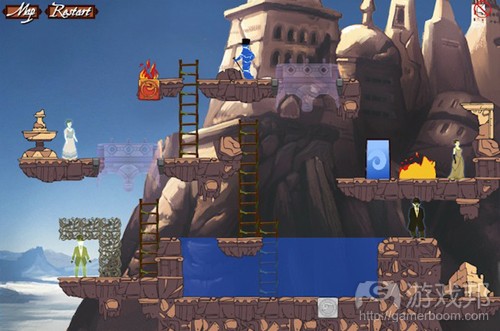
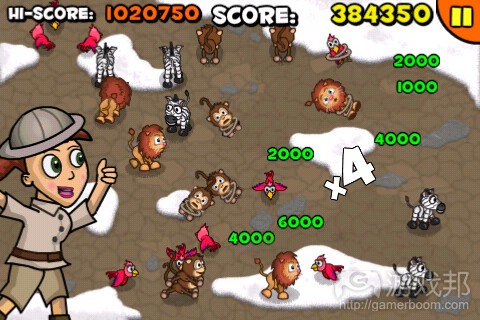
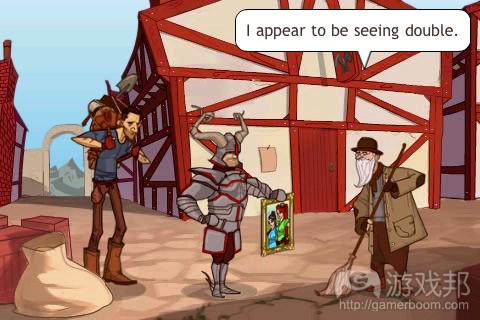
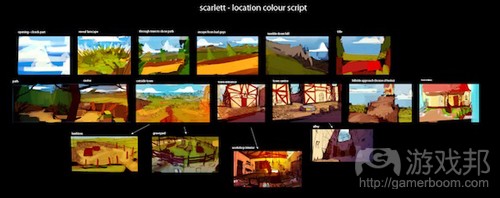


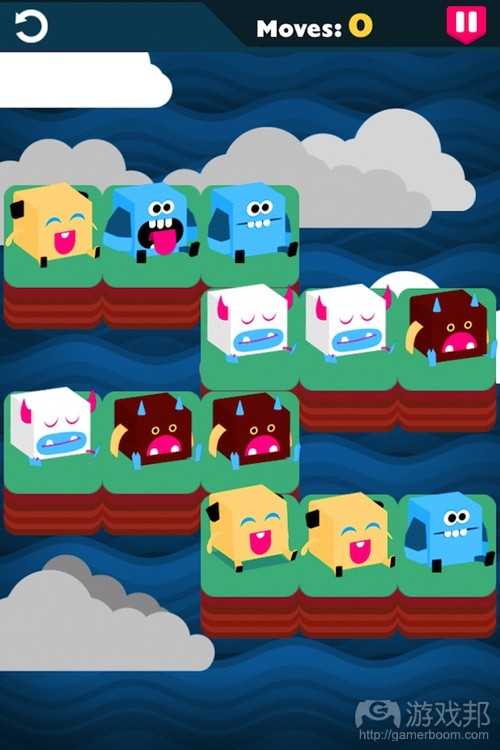
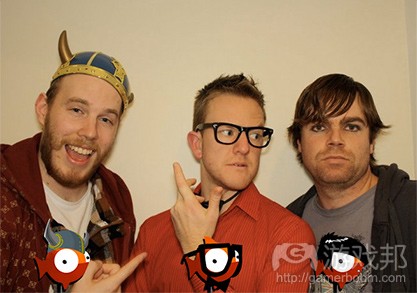














 闽公网安备35020302001549号
闽公网安备35020302001549号